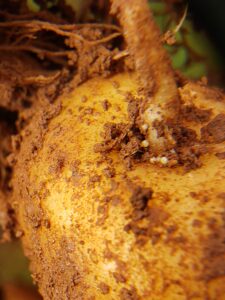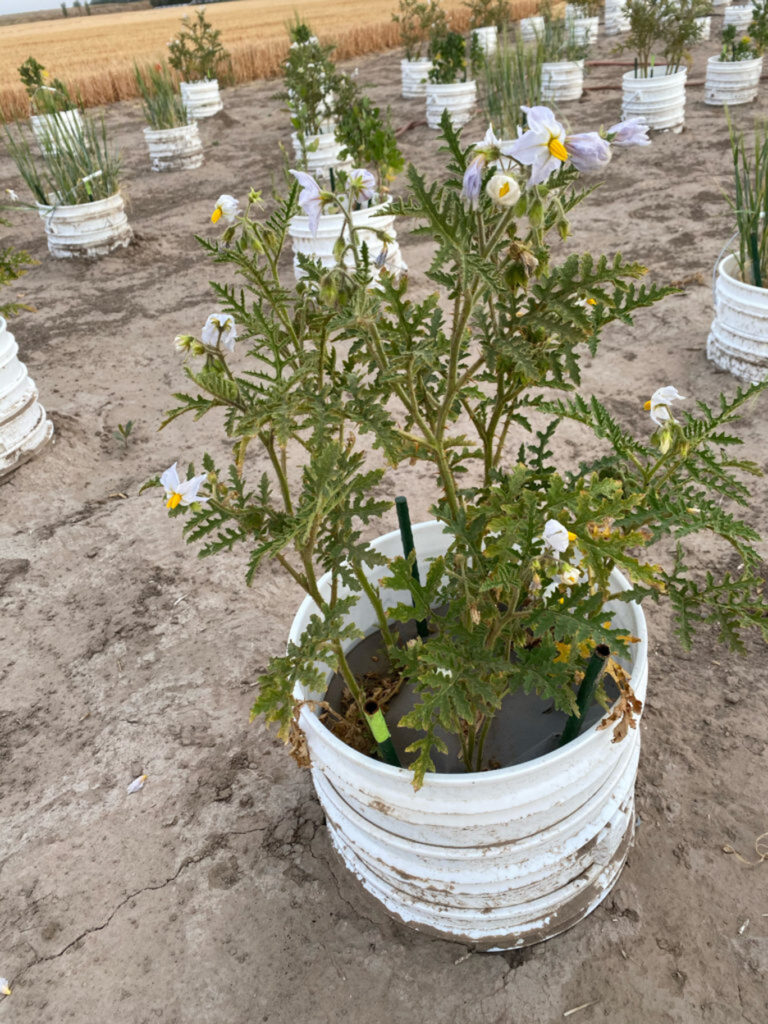University of Idaho researchers introduce genes from the litchi tomato plant into potatoes
Reprinted with permission from University of Idaho

University of Idaho (U of I) researchers are introducing genes from a plant in the nightshade family into potatoes, seeking to develop spuds that resist harmful nematodes.
The plant, called litchi tomato, has natural resistance to several species of cyst and root-knot nematodes.
“That’s an unusual trait to have such broad resistance,” says Allan Caplan, associate professor, U of I Department of Plant Sciences, who is involved in the project.
Nematode cysts can remain viable in fields for more than a decade, and they can be found down to 3 feet deep in soil.
U of I researchers, led by nematologist and plant pathologist Louise-Marie Dandurand, have worked for several years studying a range of possibilities for using litchi tomato as a tool to avert nematode-related yield losses in potatoes.
Litchi tomato has been planted as a “trap crop” in the program, quarantined in a small area of eastern Idaho, to eradicate pale cyst nematode (PCN). When planted in fields infested with PCN, litchi tomato stimulates cysts to hatch in the absence of a viable host, causing them to starve.
Dandurand also has a post-doctoral researcher seeking to identify chemicals in litchi tomato that harm or kill nematodes. The chemicals that prove effective could be refined and applied directly to fields as pesticides.
Caplan and Fangming Xiao, a professor in the Department of Plant Sciences, have been working to identify genes in litchi tomato that are specifically expressed when nematodes attack the plant.


